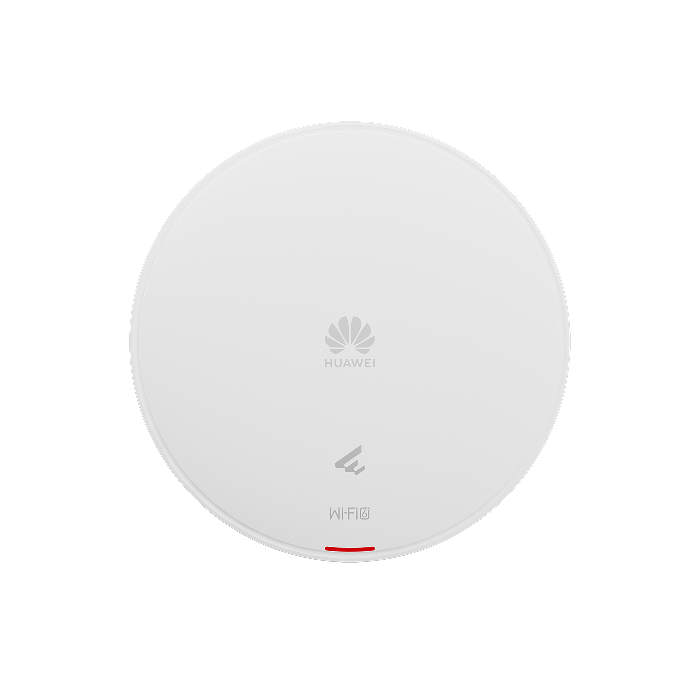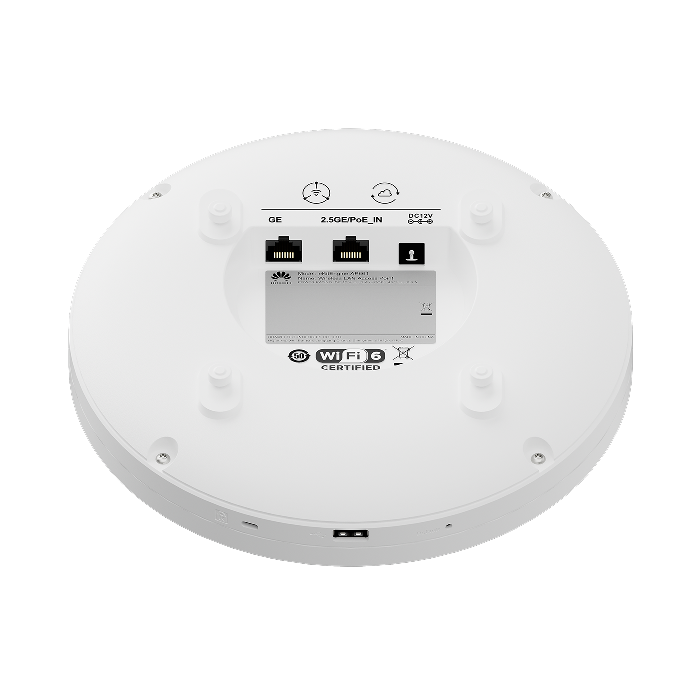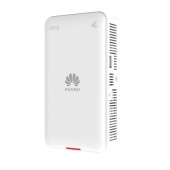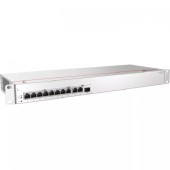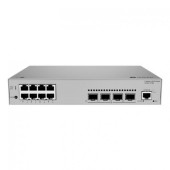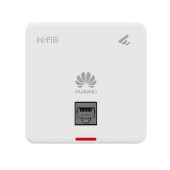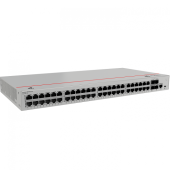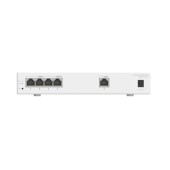Huawei eKitEngine AP661 Wi-Fi 6 Access Point
Huawei eKitEngine AP661 is an indoor AP in compliance with Wi-Fi 6 (802.11ax). It can simultaneously provide services on 2.4 GHz (2x2 MIMO), 5 GHz (2x2 MIMO) and 5 GHz (4x4 MIMO) frequency bands, achieving a device rate of up to 6.575 Gbps. Built-in smart antennas of the AP enable always-on Wi-Fi signals for users, significantly enhancing users’ wireless experiences. These strengths make it ideal for densely populated scenarios such as mobile office, education, and stadiums.
Wireless network Wi-Fi 6 AX6600, Bluetooth
AP661 is designed to transmit a Wi-Fi 6 wireless network, it supports the IEEE 802.11 b/g/n/ax protocols in the 2.4 GHz band and IEEE 802.11 a/n/ac/ax in the 5 GHz band. The device can conduct three radio transmissions simultaneously: 2.4 GHz 2x2 MIMO, 5 GHz 2x2 MIMO and 5 GHz 4x4 MIMO - 2 + 2 + 4. Thanks to this, the maximum theoretical throughput is 574 Mb/s in 2.4 GHz, 1201 Mb/s in 5 GHz 2x2 MIMO and 4804 Mb/s 5 GHz 4x4 MIMO. Such high speed will be useful especially in places that are intended for many users at the same time. The AP661 will provide adequate throughput in situations where standard APs would not be able to deliver sufficient speed to customers.
The access point also uses many additional functions that positively affect the network quality. MU-MIMO allows you to simultaneously transmit and receive data from many clients, which eliminates the phenomenon of data queuing. Beamforming is used to shape the beam to improve connection to devices at the edge of the range, and TWT saves energy by waking up connected devices only when a transmission is established.
Additionally, the device supports Bluetooth transmission (BLE 5.2), which you can use for, among others, remote management, location or IoT.
2.5G Ethernet port, 1G Ethernet port, USB port, PoE power supply, DC socket
The offered product is equipped with one 2.5G Ethernet port (10/100/1000/2500 Mb/s) and one gigabit Ethernet port (10/100/1000 Mb/s). The 2.5G port also serves as a PoE power input in the IEEE 802.3 at standard, you can also supply power using a standard DC socket (12 V). The maximum power consumption, excluding USB, is 21.2 W.
The manufacturer used a USB port with the intention of using it to connect an external modem for IoT, e.g. ZigBee or RFID.
Smart Antennas
The access point has Smart antennas, the antenna structure consists of many elements that can work independently of each other. Depending on your needs, the antenna elements can modify the shape of the main beam to provide the best possible coverage to the connected clients. The device adapts to radio conditions and provides much better signal coverage than APs equipped with regular omnidirectional antennas. The energy gain is 4 dBi in the 2.4 GHz band and 5 dBi in the 5 GHz band.

